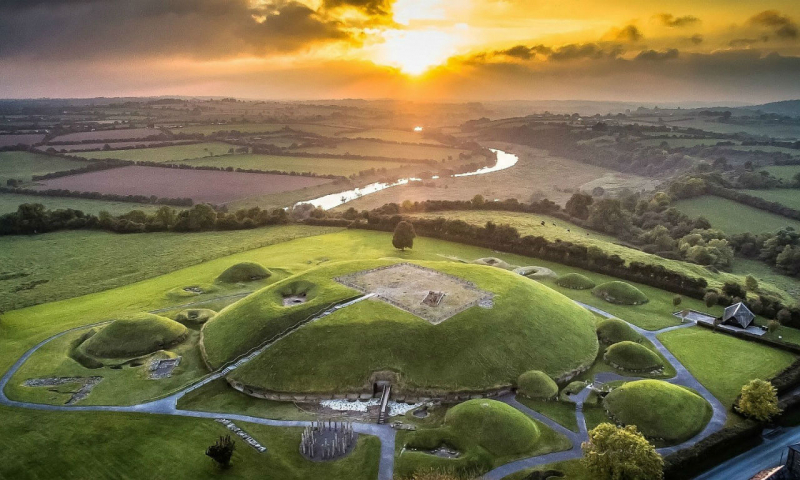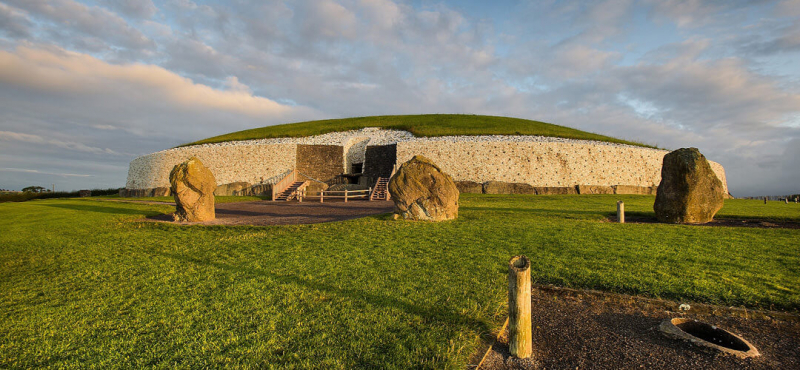Brú na Bóinne
The Newgrange passage grave, also known as Br na Bóinne, or "palace or farmstead of the Boyne," is one of Ireland's most famous prehistoric sites, situated on a commanding ridge near a loop of the River Boyne. Newgrange, a UNESCO World Heritage site, is a massive mound composed of alternating layers of earth and stone that dates back to around 3200 BC. It has a diameter of 295 feet and a surface area of 47,000 square meters, with a ring of 97 curbstones around its base leading to the central chamber, which is lined with 43 upright stones, some of which are etched. Its entryway, which features enigmatic lozenges, zigzags, spirals, concentric circles, and other geometric forms, is ornately ornamented and a remarkable example of megalithic art. These could have been symbolic or religious or magical, but the original meaning of the motifs remains unknown.
The winter solstice is inextricably tied to a roof box above the entrance that admits sunlight into the chamber. The entire area comes alive with vivid drumming and singing four minutes after sunrise on December 21st, generated by a heterogeneous assemblage of archaeologists, youngsters, pagans, poets, and wolfhounds. It is supposed that you can hear the Tuatha Dé Danann, the pre-Christian Irish gods who are said to have arrived on a dark cloud as divine creatures and with whom the place is linked, at this hour.
Location: Newgrange, County Meath













